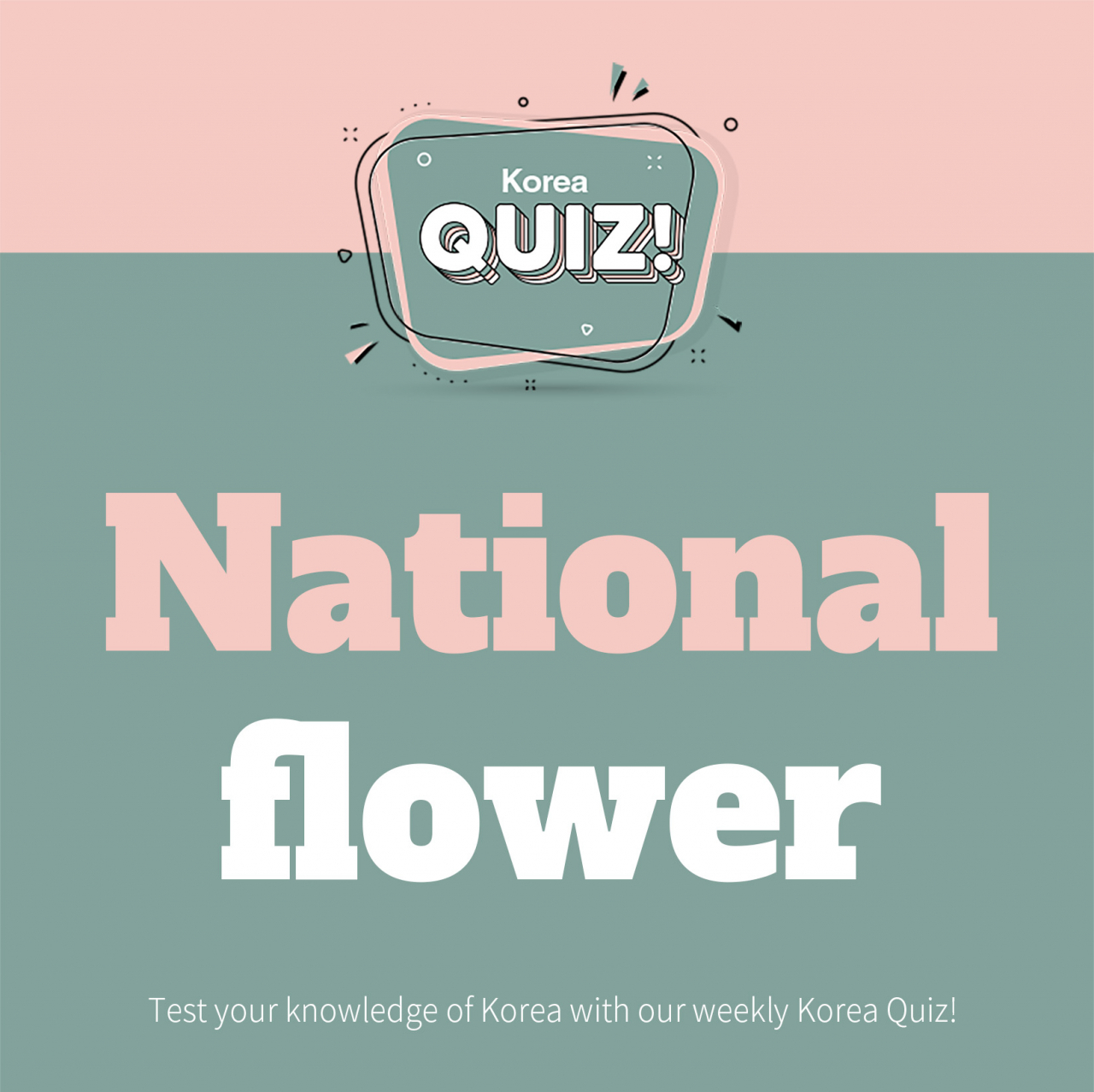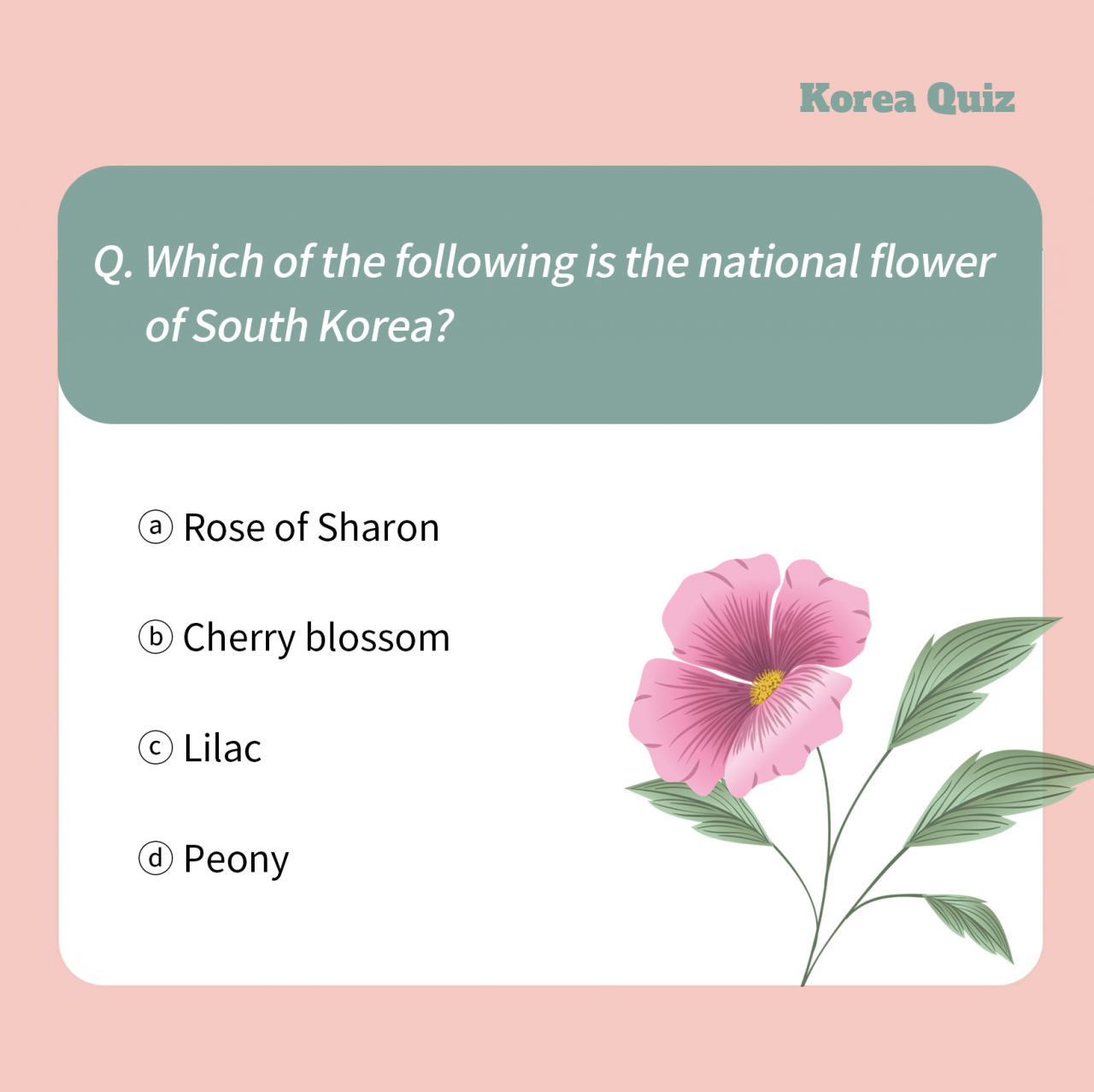

Find the answer at the bottom.
While South Korea lacks a specific law officially designating a national flower, the rose of Sharon, or "mugunghwa" in Korean, is widely recognized as such. The Ministry of the Interior and Safety introduces the flower alongside the national flag, anthem and seal as national symbols.
Blooming throughout the summer for approximately 100 days from July to September, the flower is known for its resilience to diseases.
Its Korean name, which translates to "everlasting flower," symbolizes the enduring beauty of the flower, and is often compared to the resilient spirit of the Korean people who have survived numerous invasions over the peninsula's history.
Historical records show the rose of Sharon had held special significance in Korea, from as early as Gojoseon (2,333 BC-108 BC), the first Korean kingdom, with the flower being used at altars for heavenly rites, offered by the king. An 8th-century document from the Silla Kingdom describes Silla as the “country of the rose of Sharon.”
During the Japanese colonial occupation (1910-1945) of Korea, however, the Japanese intentionally downplayed the flower's significance, similar to their treatment of other national symbols of Korea, such as the Korean flag, known as the "Taegeukgi."
With Korea's liberation in 1945 and the establishment of the government in 1948, the mugunghwa gained official recognition as the national flower.
It has been incorporated into the lyrics of the national anthem. The seals of the president and the executive, legislative and judicial branches -- all designed in 1949 -- feature the flower. The national emblem, created in 1963, incorporates both the Taegeukgi and the rose of Sharon. Since 1966, it has graced the back of the 1 won coin issued by the Bank of Korea.
In recent decades, however, mugunghwa’s popularity has been waning.
According to a 2022 survey conducted by the Korea Forest Service on Koreans' favorite flower trees and bushes, the rose of Sharon ranked eighth, garnering 5.7 percent support.
Cherry blossom trees, Japan's national flower planted en masse here during the colonial period, topped the list with 18.1 percent.
More than half of the respondents cited "rarely seen" as the reason for their lower preference for the mugunghwa.
As of 2022, mugunghwa accounted for only 4.7 percent of the total roadside trees and bushes nationwide in Korea, while cherry trees accounted for 14.9 percent.
Answer: (a)





